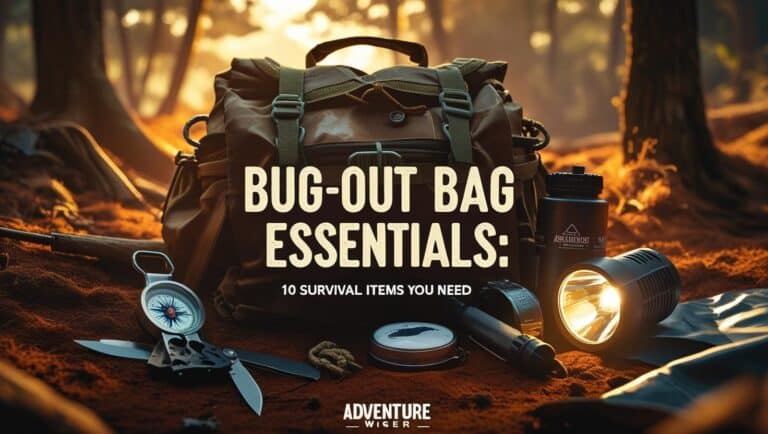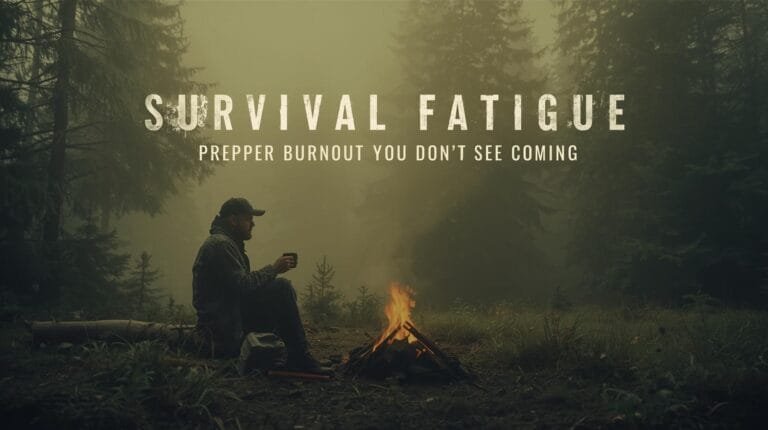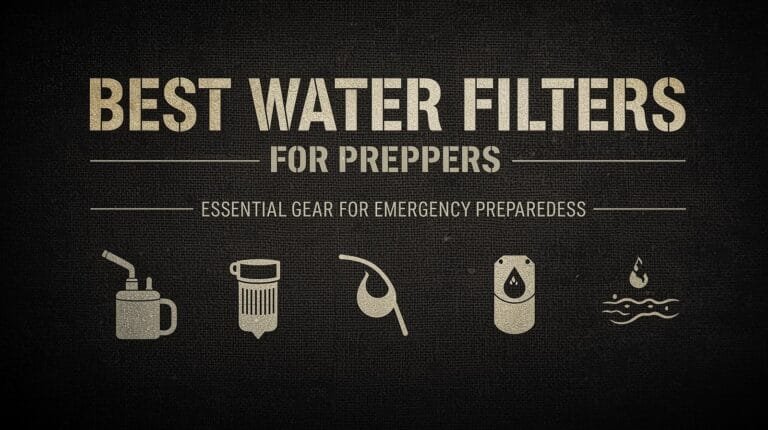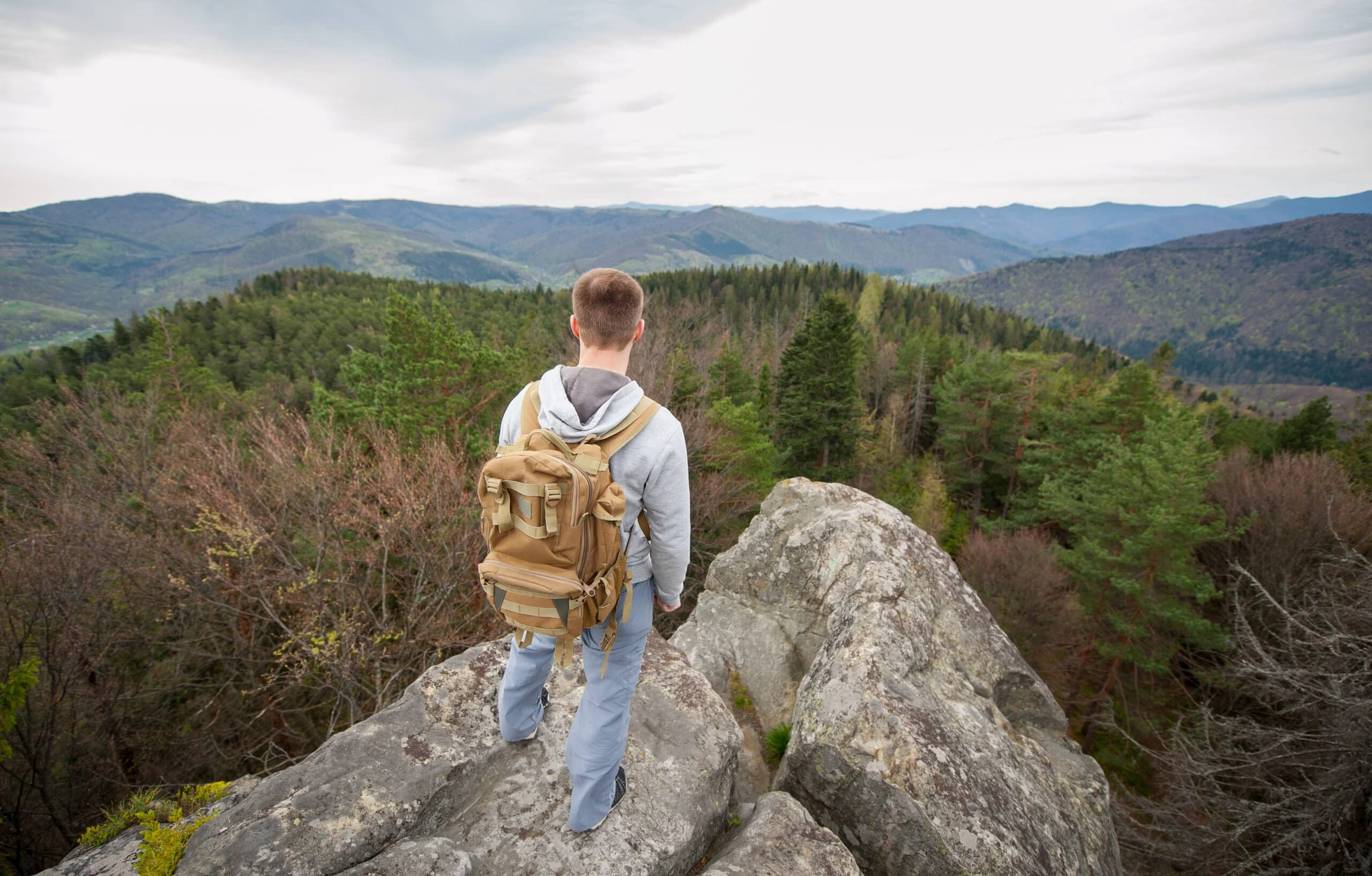
How to Survive 7 Days with Just a Bug-Out Bag (Without Losing Your Mind)
If disaster struck right now—no warning, no countdown—could you grab your bug-out bag and disappear for an entire week? No grocery runs. No internet. No cozy backup plan waiting in the garage. Just you, your gear, and your grit. Sounds dramatic? It should. Emergencies rarely give you time to prepare once they hit—and when they do, your survival comes down to what’s on your back and what’s in your head.
Most preppers think they’re ready until they test their setup. Then reality sets in: overpacked bags that feel like gym equipment, forgotten basics like socks or fire-starters, and “survival tools” that break faster than a dollar store flashlight. That’s why the 7-Day Bug-Out Challenge exists. It’s not just about testing gear—it’s about exposing weak points before a real crisis does.
This challenge pushes you to survive seven full days using only what’s in your bug-out bag. No bailouts. No cheat codes. Just the raw truth about what works, what doesn’t, and how your planning holds up when comfort goes out the window. If you can handle this test, you’re not just prepared—you’re practically apocalypse-proof.
In this post, I’ll break down exactly how to take on the 7-Day Bug-Out Challenge—step by step. You’ll learn what to pack, how to plan, and how to actually enjoy the process without going stir-crazy or starving by Day 3. This is more than survival—it’s about building confidence, clarity, and calm in the middle of chaos. Let’s get into it.
What is the 7-Day Bug-Out Challenge?
The 7-Day Bug-Out Challenge is a self-imposed survival test. It’s designed to simulate an emergency scenario where you’re forced to leave your home with only your pre-packed bug-out bag—and stay alive, mobile, and functional for 7 days straight.
This challenge is a stress test. It reveals weaknesses in your plan, gear, and mindset in a safe (but real enough) setting. Think of it as survival practice… with less panic and more lessons.
Reasons You Need to Know the 7-Day Bug-Out Challenge
In a real emergency, you won’t have time to think. You’ll have to act fast, carry only what matters, and adapt on the fly. This challenge trains you to do exactly that.
Why this matters:
- Emergencies are rarely announced in advance.
- Your gear is only useful if you know how to use it under pressure.
- Most bug-out bags are either overstuffed or missing critical items.
- Mental preparation is just as important as physical supplies.
- Practicing now prevents disaster later.
This isn’t about perfection—it’s about awareness. This challenge is how smart preppers fix gaps before they become life-threatening.
Step-by-Step Instructions to Conquer the 7-Day Bug-Out Challenge
The goal isn’t just to survive—it’s to thrive under pressure. A real emergency doesn’t come with a checklist or a second chance. This challenge is your dry run, your stress test, your wake-up call—minus the actual chaos. Here’s how to run your own 7-day bug-out simulation with maximum insight and minimal regret.
Step 1: Pick Your Scenario

Don’t just grab your pack and start wandering the woods—pick a threat that actually makes sense for your region and lifestyle. Tailor your challenge to simulate something you might realistically face. That’s what makes the learning stick.
Examples:
- Wildfire evacuation (great for the West Coast)
- Grid-down crisis (hello, rolling blackouts)
- Flash flood escape (Midwest and Gulf states, looking at you)
- Civil unrest (urban or suburban situations)
Why it matters:
Different threats = different needs. A wildfire scenario demands speed and mobility. A grid-down event means focusing on water, cooking, and staying warm. Choosing a scenario makes your test grounded and actionable—not just a glorified camping trip.
Step 2: Lock in Your Loadout
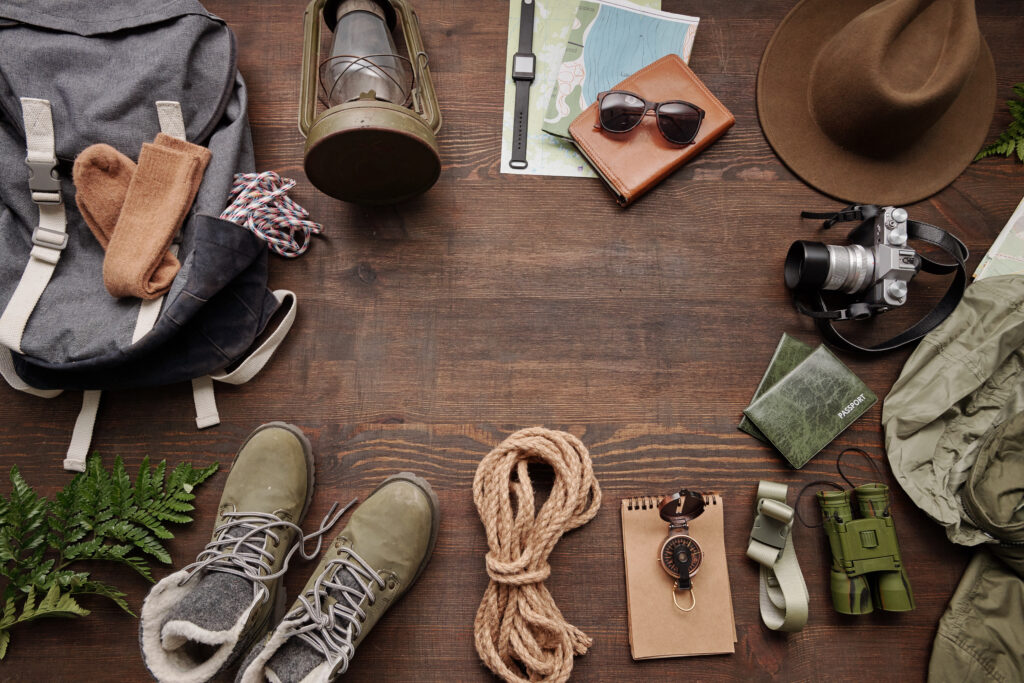
This is where fantasy meets friction. Your loadout should fit in one standard-sized backpack—no refills, no cheating with extra gear hidden in your car. Treat it like a true emergency where what you’ve got is all you’ve got.
Core Items to Pack:
- Shelter (tent, tarp, or bivy sack)
- Food for 7 days (freeze-dried, MREs, high-calorie snacks)
- Water filter or purification tablets
- Fire-starting kit (lighter, ferro rod, waterproof matches)
- Multitool or survival knife
- Flashlight/headlamp + extra batteries
- Basic first aid kit (plus any meds you need)
- Layered clothing (appropriate for weather)
- Navigation tools (map, compass—yes, even in 2025)
Why it matters:
Overpacking kills mobility. Underpacking invites misery. Your bag should be a well-oiled machine—not a garage sale in nylon form. Test how every ounce serves a purpose. And if it doesn’t? Leave it.
Step 3: Choose a Destination (Even If It’s Hypothetical)
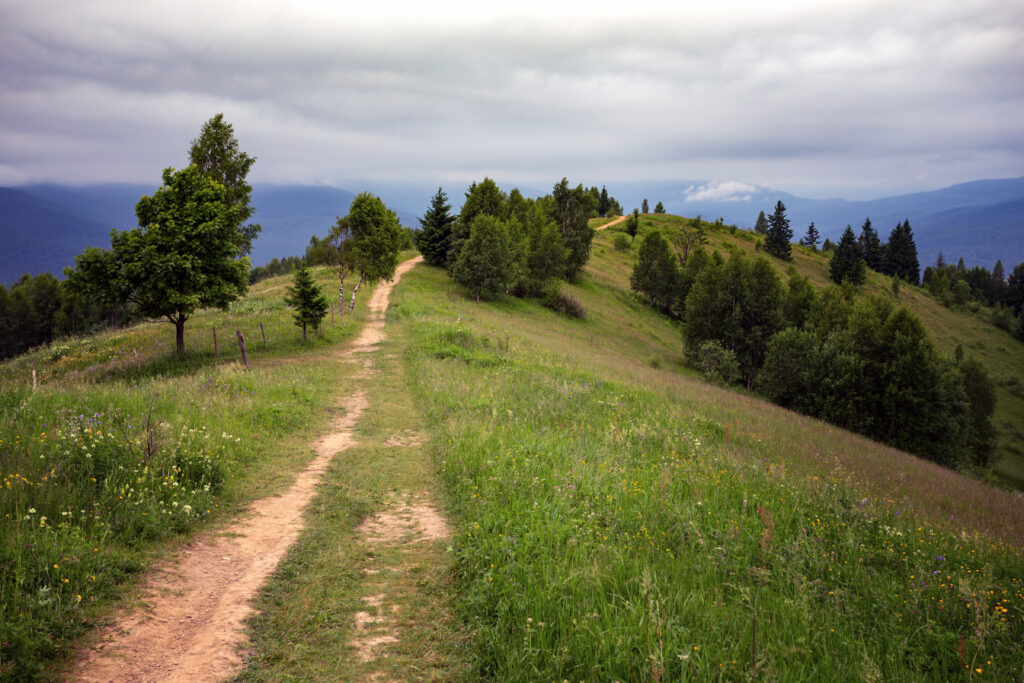
Bugging out without a destination is like GPS with no signal—you’re just wandering in circles. Even if you’re not heading into the wilderness, your bug-out test needs a clear objective.
Examples of potential destinations:
- A cabin or off-grid location you’d actually use in a real emergency
- Public land where dispersed camping is allowed
- Your own backyard or a local park (urban challenge version)
- A 5–10 mile walking route from your home
Why it matters:
This step exposes critical flaws in your plan. Is your pack too heavy for the hike? Is your footwear rubbing blisters by mile two? Does your water filter actually work after sitting unused for a year? Destination-based tests create meaningful pressure and realistic learning.
Step 4: Document the Process Daily

Your memory under stress is about as reliable as a bargain-bin flashlight. So don’t rely on it. Whether you use a physical notebook or a phone (if you’re not simulating total grid-down), journaling your experience is vital.
Track things like:
- What worked as expected
- What completely failed
- What you forgot (that you swore you’d never forget)
- What you ran out of early
- What made life easier than expected
- What gear you never used
Why it matters:
This is where the gold is. These notes are your roadmap to becoming a smarter, leaner, tougher prepper. When the challenge ends, your gear list and strategy should evolve—because you learned from doing, not just reading.
Key Considerations for Successfully Surviving 7 Days
Surviving for seven days with just your bug-out bag is as much about mental agility and decision-making as it is about gear. Your loadout might be tight, your shelter system dialed in, and your fire-starting game strong—but success hinges on a few key insights that often get overlooked.
Mindset Trumps Gear

You can have the best survival gear on the planet, but if you panic, freeze, or mentally check out, you’re toast. Survival is 80% mental. That means staying calm when things go sideways, staying flexible when plans fall apart, and keeping your sense of humor when you realize you packed three knives but no toilet paper.
Pro Tip:
Practice visualizing uncomfortable scenarios. Run through “what if” drills in your mind. Mental reps count too.
Redundancy Where It Counts
No, this doesn’t mean stuffing your bag with three backup flashlights. But for critical systems—like fire, water, and shelter—redundancy matters.
Have:
- Two ways to purify water (e.g., Sawyer filter + purification tabs)
- Two fire-starting methods (ferro rod + lighter)
- Backup shelter options (tarp + bivy)
Why? Because in the wild, Murphy’s Law always applies: if something can go wrong, it probably will.
Hydration Is Your First Failure Point
Most bug-out bags over-focus on tools and forget the basics. Water is heavy, but running out of it will end your challenge (or life) faster than anything else. Know where your water sources are and how you’ll purify them—daily.
Pro Tip:
Simulate a day where your first water source is not where you expected it to be. Then see how your plan holds up.
Feet Matter More Than Firesteel

Here’s the thing most people forget: if your feet give out, you’re done. Your footwear, socks, and blister management matter more than your knife’s steel composition. If you plan to walk anywhere with your pack, this is a survival system in itself.
Checklist:
Moleskin, blister tape, or foot powder
Broken-in hiking boots or trail runners
Wool socks (pack an extra pair—always)
Taking it to the Next Level: How to Expand the Challenge
Once you’ve conquered the basic 7-day simulation, it’s time to go from “prepared” to “prepper pro.” These next-level tweaks will push your planning, mindset, and improvisation skills to new heights—because let’s face it, real-life disasters rarely follow your script.
1. Add Environmental Pressure
The first version of this challenge probably happened in decent weather. Now… add the elements.
- Try it in winter—test your gear’s insulation limits.
- Bug out in the rain—see how well your shelter and clothing hold up.
- Simulate heat—test hydration and sun protection protocols.
Nothing will teach you faster than weather turning against you. And it will.
2. Bring in Other People
Try the challenge with a friend, partner, or family member. Suddenly, logistics change.
- You’ll need more food and water.
- Communication and leadership skills matter.
- You’ll discover strengths (and weaknesses) in your group dynamic.
Bonus round: simulate kids in the scenario. Even if you don’t have them, prepping for others builds real-world empathy into your plan.
3. Add Surprise Twists Midway Through
No emergency stays static. Add curveballs to stress-test adaptability.
Examples:
- “You’ve lost your lighter. Now what?”
- “A rainstorm ruined your sleeping bag.”
- “You have to change locations and hike 5 miles.”
These changes force you to think creatively, problem-solve under pressure, and use what you have—just like you would in real life.
Alternatives to the Full 7-Day Test
Not everyone has the flexibility to vanish into the woods for a week—and that’s okay. You can still train like a prepper ninja without living like a bush crafter.
1. The 24-Hour Backyard Challenge
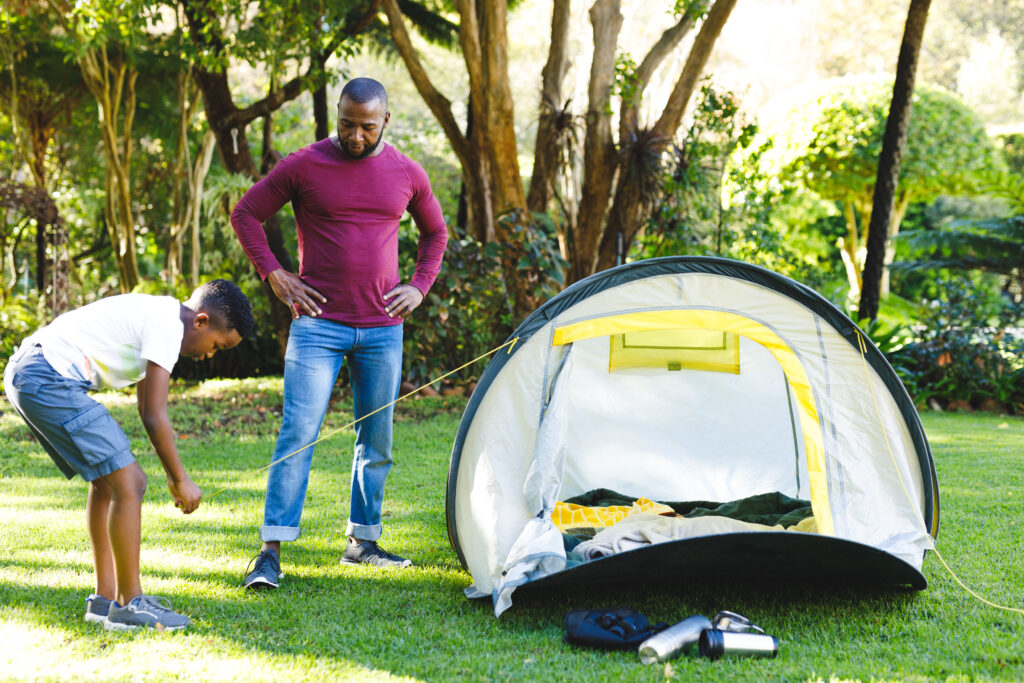
Set up camp in your backyard with only your bug-out gear. No going inside. No ordering DoorDash. Just you, your gear, and your mosquito tolerance.
It’s a quick test of:
- Shelter setup
- Food prep
- Comfort under constraints
Great for beginners or busy folks who want a rapid reality check.
2. Weekend-Only Trial Run
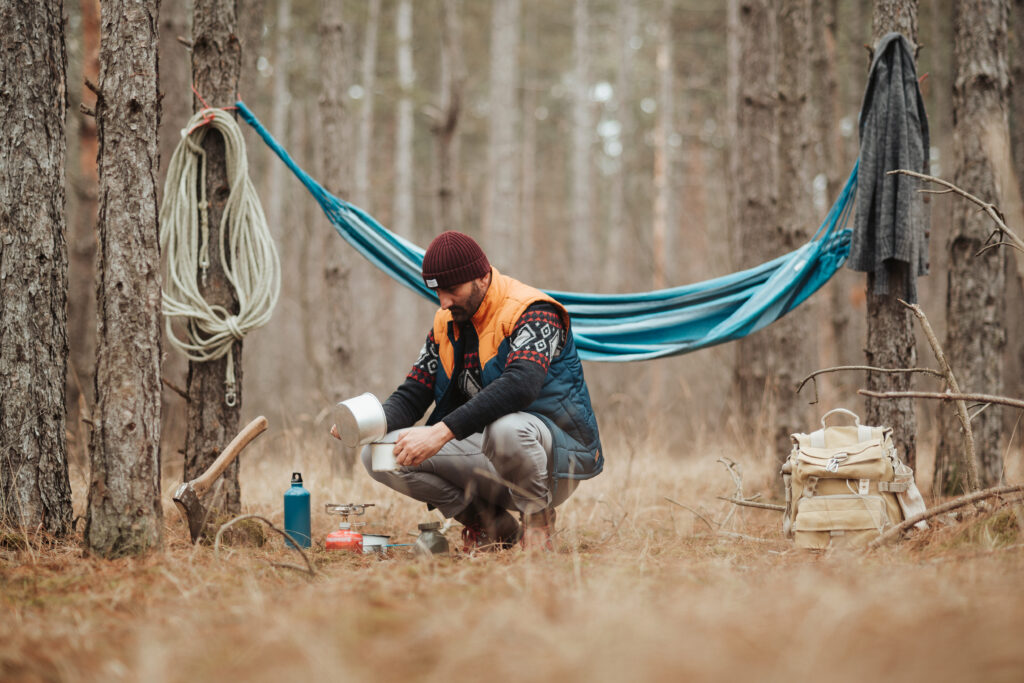
Spend Friday to Sunday living out of your pack—at a local park, public land, or a state-approved dispersed camping area.
This version lets you:
- Test your gear systems in the wild
- Practice basic skills like water filtration and fire-making
- Return home in time for Monday’s coffee
3. Urban Bug-Out Walk
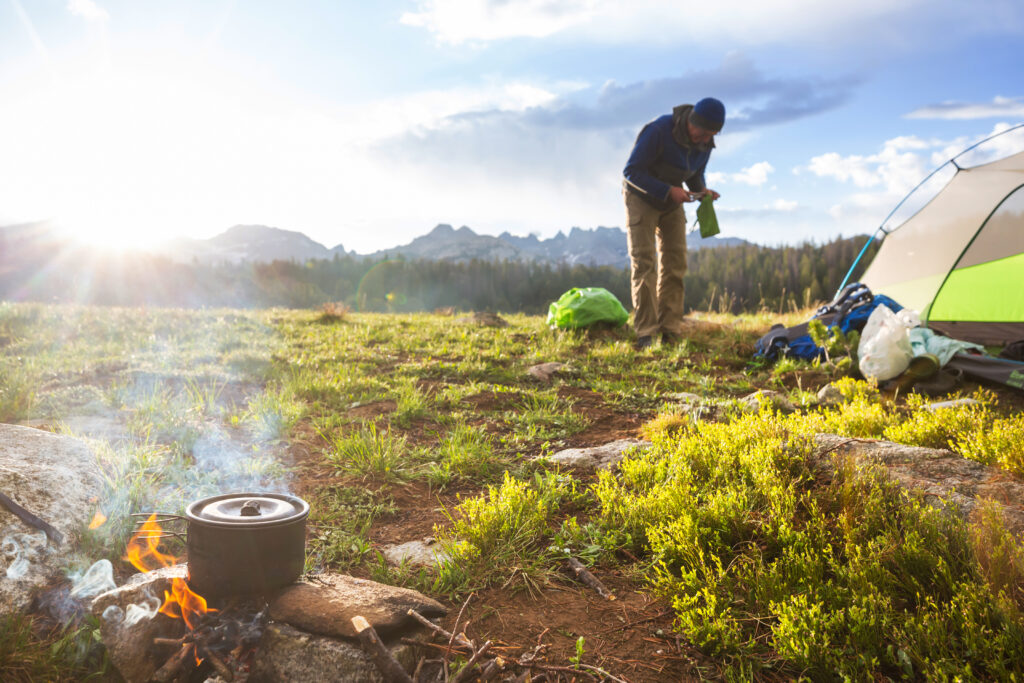
Grab your pack and walk 3–5 miles through your city or neighborhood.
You’ll learn:
- If your pack is manageable
- How your gear interacts with real-world terrain
- How prepared you are to navigate without a car
Even better: combine this with public transit or navigation obstacles to simulate an actual evacuation.
Wrapping Up and My Experience With the 7-Day Bug-Out Challenge
The first time I did this challenge, I made every rookie mistake in the book. My bag was too heavy, I didn’t have enough calories, and my sleeping setup left me freezing by night three. But I also learned more in those seven days than I had in a year of watching YouTube preppers and buying gear.
Prepping isn’t about perfection—it’s about progress. The 7-Day Bug-Out Challenge isn’t meant to scare you. It’s meant to empower you. It sharpens your instincts, reveals your blind spots, and teaches you to trust yourself.
If you’re serious about being ready, this challenge is non-negotiable. It’s the best investment of time you can make toward real-world resilience—and if done right, it might even be fun.
Over to You:
Have you ever done a full bug-out simulation—or plan to try? Drop your experience in the comments below. What surprised you? What would you do differently next time?
Want to get started?
→ I’ll be releasing a free printable 7-Day Bug-Out Tracker soon—drop your email to get it first.
And as always—stay wise, stay wild.
– Adventure Wiser

